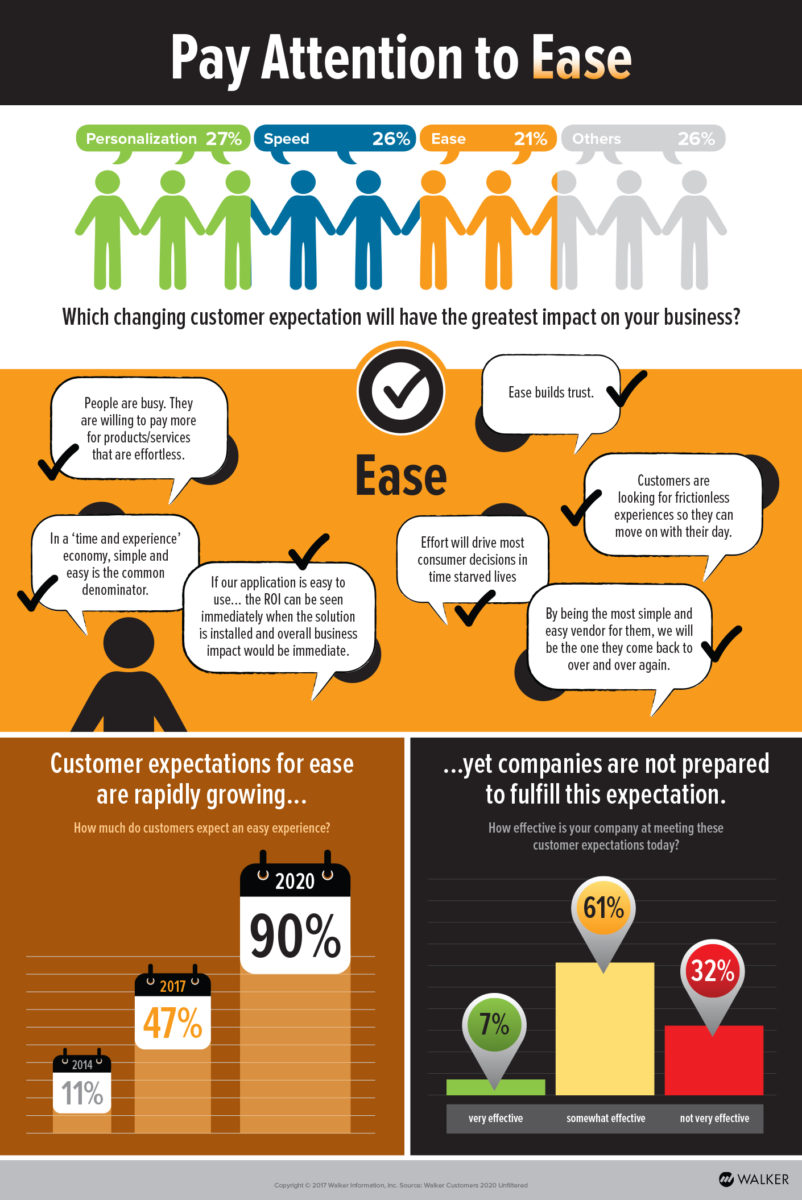It’s hard to believe the easy button has been around for more than 12 years. Introduced in August 2005, Staples set the expectation for ease as its competitive advantage – and the company was not alone.
With customers becoming more empowered and information about competitors just a click away, companies (particularly B-to-B) must invest to ensure minimal effort is involved in key phases of the journey.
It’s a conundrum – companies are faced with increased complexity while customers demand an effortless experience.
According to Walker’s latest Customers 2020 research, ease is one of the big three customer expectations for the future. In comparison to the other two expectations – personalization and speed – customer expectations for ease are already heightened.

How can customer experience professionals help deliver ease? Here are a few ideas:
- Create a journey map to prioritize. Ease boils down to identifying the specific customer interactions that cause friction. Journey mapping is a great tool for breaking down the various customer interaction stages, identifying areas where friction exists and imagining how that interaction can look in the future. Customer experience professionals are in the ideal position to lead this initiative.
- Use the right benchmarks. Many companies compare themselves to others in their industry. While relevant, that’s not the comparison customers use. They are comparing you to their experiences as a consumer. Customer experience professionals can lead the way to ensure the right benchmarks are determined and measured.
- Don’t focus too narrowly on the digital experience. Building and maintaining strong customer relationships requires a balance between personal interactions and the digital experience. Customer experience professionals can help determine where personal contact adds value.
How are you helping your organization become easier to do business with?